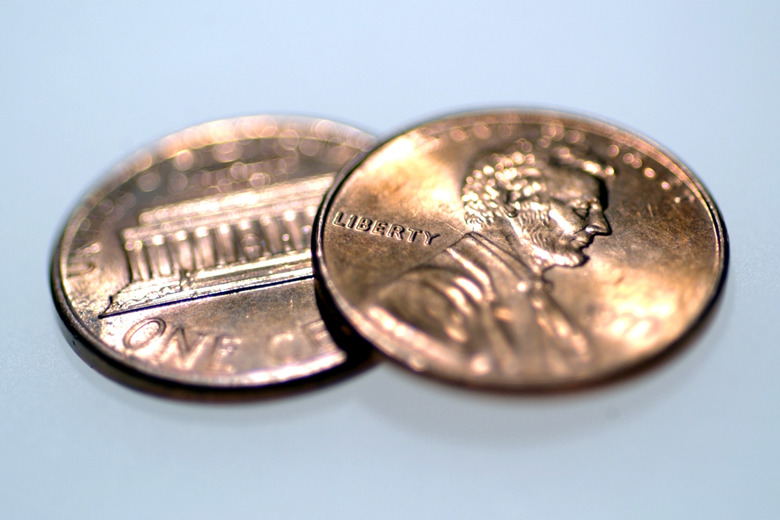How Does Acid Affect Copper?
With its shiny appearance and superb conductivity, copper's is used in household wires, computer circuitry, decorative objects and even the Statue of Liberty. Its use in pennies makes it a common part of many science experiments, including how acid effects this metal. Younger students can explore the action of weak acids, while older students may get a chance to discover the effects of strong acids on copper.
Weak Acids
Weak Acids
The most common weak acid we have around the home is vinegar – a five-percent solution of acetic acid. Over time, copper pennies turn brown as the copper oxidizes with air. Vinegar and other weak acids such as citrus juice dissolves this layer of copper oxide. After soaking the penny in the acid, rinse it with clean water and you'll be left with a shiny penny.
Warnings
Warnings
Although cleaning your pennies with vinegar can make for a fun home experiment, avoid doing the experiment in large quantities. The copper oxide and vinegar form copper acetate, which is harmful to fish and plants. Use as little vinegar as possible and wash the extra down the sink with plenty of water. Also, don't use vinegar to clean antique coins, since the cleaning lowers their value.
Strong Acids
Strong Acids
Strong acids include nitric acid, sulfuric acid, hydrochloric acid and phosphoric acid. The ability of an acid to oxidize metals determines its effect on copper. Hydrochloric and phosphoric acid don't oxidize metals well and won't dissolve copper. Sulfuric acid has a medium oxidizing ability and will dissolve copper over time. With a high oxidative strength, nitric acid will completely dissolve copper, turning it green and then blue as the metal wears away in a matter of minutes. Any experiments with strong acids should be done in a lab equipped with a fume hood.
Statue of Liberty
Statue of Liberty
The Statue of Liberty is made with a thin skin of copper. When the statue was first displayed, it had the metallic red sheen of a new penny. The green color on the statue now is not a result of acid rain, but of natural oxidation as a reaction of air and moisture. The statue could be cleaned in its entirety using a weak acid solution, but this would remove the protective copper oxide, wear away some of the copper and leave the copper underneath exposed to more oxidation. Over time, the statue would disappear if routinely cleaned.
